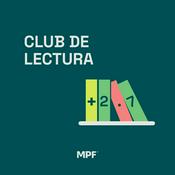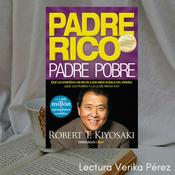131 episodios

Inside CIV Robotics: What Actually Works in Construction Tech Sales
20/12/2025 | 43 min
In this conversation, David Grijalva from CIV Robotics shares his journey in the robotics industry, discussing the rapid evolution of robotics in construction, the importance of mentorship, and effective sales strategies. He emphasizes the need for flexibility in sales, the significance of building relationships, and the challenges of hiring talent in the robotics space. David also provides insights into compensation structures for sales teams and the importance of understanding the multi-faceted decision-making process in construction projects. Takeaways David has over 10 years of experience in robotics. The construction industry is adopting robotics faster than expected. Mentorship played a crucial role in David's career. Sales in robotics requires a deep understanding of the construction process. Building relationships is key in the construction industry. Effective communication is essential for sales success. Sales goals should be aligned with the company's yearly objectives. Hiring talent in robotics is challenging but crucial for success. Compensation structures should incentivize performance and strategic thinking. Understanding the decision-making process in construction is vital for closing deals. Chapters 00:00 David Grijalva's Journey in Robotics 01:19 The Rapid Adoption of Robotics in Construction 03:02 Mentorship and Influences in Robotics 05:50 A Day in the Life at CIV Robotics 07:57 Understanding CIV Robotics' Projects 10:36 Building a Sales Organization in Robotics 15:04 Effective Sales Strategies in Construction Robotics 20:21 Strategic Follow-Ups and Personal Touches 21:26 Quarterly Goals and Sales Metrics 25:21 Hiring Challenges in Construction Sales 29:11 Compensation Structures for Sales Teams 33:44 Sales Ramp-Up Periods and Expectations 40:35 Understanding Influencers in Construction Sales 📩 Don’t miss future episodes. Subscribe to the AEC Tech + AI Newsletter: https://aiaecdigest.substack.com/

Swarm Intelligence, 4D Printing & BIM: Inside Paarija’s World
17/12/2025 | 41 min
In this conversation, Paarija Saxena shares her journey as a design technologist in the architecture, engineering, and construction (AEC) industry. She talks about her educational background, the role of mentorship, and how design technology is rapidly reshaping architecture. Paarija stresses the importance of curiosity, problem-solving, and embracing experimentation. She emphasizes that architecture is not just about aesthetics it’s about execution, adaptability, and continuous learning. She also highlights how innovation in generative and parametric design, as well as new approaches in education, can empower the next generation of architects and designers to navigate their careers with confidence. Key Takeaways Architecture is not just about beauty, it’s about execution. Be curious, and take it seriously. Tech in AEC is evolving fast; keep learning and adapting. Don’t get stuck chasing perfection progress matters more. Being a generalist can be a strength. Learning is problem-solving, not memorization. Mentorship is crucial to growth in this field. Experimentation drives innovation in design. Chapters 00:00 – Journey from Jaipur to Design Technology 02:24 – The Role of Technology in Architecture 05:05 – Generative Design and Its Impact 07:36 – Navigating Challenges in the AEC Industry 10:08 – The Importance of Mentorship and Continuous Learning 12:56 – Transitioning to Government Projects 15:25 – Interoperability in Large-Scale Projects 18:11 – Advice for Aspiring Architects 20:12 – The Role of Curiosity in Design 22:56 – Exploring 4D Printing and Material Behavior 25:35 – Courses and Learning at Novator 29:35 – Rapid Fire Round and Closing Thoughts 📩 Don’t miss future episodes. Subscribe to the AEC Tech + AI Newsletter: https://aiaecdigest.substack.com/

From Lendlease to Podium : Journey of Building the Platform
13/12/2025 | 31 min
In this conversation, Mayur Mistry hosts Nuno Mourão and Mohamed Khan, discussing their backgrounds in property development and software architecture. They explore the challenges and innovations in the construction industry, particularly focusing on the evolution of their product, Podium, which aims to streamline project management and enhance collaboration among stakeholders. The discussion also delves into technical challenges, lessons learned from their startup journey, and valuable advice for aspiring founders and CTOs. Takeaways Mohamed has a deep-rooted passion for property development. Nuno transitioned from healthcare to construction, focusing on innovation. Podium aims to digitize the property development process. The importance of collaboration among stakeholders is emphasized. Data management is crucial for effective project execution. Learning from failures is a key part of the startup journey. Early involvement of all stakeholders can reduce project risks. Automation can significantly speed up the design process. Understanding industry complexities is vital for newcomers. Taking chances can lead to significant personal and professional growth. Chapters 00:00 Introduction and Backgrounds 04:58 Mentorship and Influences 10:11 Product Development Journey 15:48 Technical Challenges and Solutions 20:58 Advice for Founders and CTOs 25:51 Rapid Fire Round and Closing Thoughts 📩 Don’t miss future episodes. Subscribe to the AEC Tech + AI Newsletter: https://aiaecdigest.substack.com/

How to Drive Tech Adoption in Architecture & Construction Firms?
10/12/2025 | 35 min
In this conversation, Jeff Echols, Chief Innovation Officer in the AEC industry, shares insights on his diverse career journey, the importance of innovation, and the challenges faced by architecture and construction firms in adopting new technologies. He emphasizes the need for a culture of growth and community building, while also discussing the competitive advantages that can be gained through understanding client needs and leveraging technology effectively. Jeff reflects on the human aspect of professional services and the importance of making life better for clients. Takeaways Jeff Echols emphasizes the importance of a growth mindset in the AEC industry. Building community is crucial for personal and professional growth. Innovation in AEC requires understanding client needs and providing value. Technology adoption must be phased and project-based in the AEC industry. Cultural shifts are necessary for successful technology integration in firms. The hardest part of community work is often walking away from it. Competitive advantage comes from leveraging technology to improve client experiences. Startups in AEC must focus on emotional connections in their sales strategies. Understanding the economics of clients is vital for architects and engineers. The intersection of human and technology is where true innovation happens. Chapters 00:00 Introduction to Jeff Echols 01:35 Career Highlights and Evolution 06:56 Navigating Difficult Career Choices 13:46 Building Competitive Advantage in AEC 16:56 Common Mistakes of Startups in AEC 20:32 Identifying Problems to Tackle in AEC 24:24 Technology Adoption Across Firm Sizes 29:37 Cultural Shifts for Technology Adoption 32:33 Final Thoughts and Reflections 📩 Don’t miss future episodes. Subscribe to the AEC Tech + AI Newsletter: https://aiaecdigest.substack.com/

Inside the Minds behind book: Structural Design of Lightweight Architecture
06/12/2025 | 32 min
In this conversation, Mayur Mistry hosts Joshua Schultz and Christian Stutzki, discussing their experiences and insights in lightweight architecture and structural design. They explore their career highlights, the influences of the Bauhaus movement, the collaborative nature of their work, and the challenges faced in the industry. The discussion also delves into the writing process of their upcoming book, which aims to share knowledge and experiences in a fun and engaging way. Key themes include the importance of integrated design, the need for historical documentation in engineering, and the value of collaboration in achieving innovative solutions. Takeaways The book is not a textbook but a fun exploration of lightweight structures. Integrated design involves collaboration among all stakeholders. Constraints in design can drive innovative solutions. Historical context is crucial for understanding structural innovations. Practical experience is essential for navigating the industry. Collaboration is key to successful lightweight architecture. Recording engineering history helps future generations. Understanding the design process is vital for problem-solving. Long-term thinking is necessary during project execution. Personal experiences shape professional development. Chapters 00:00 Introduction to Lightweight Architecture 01:46 Career Journeys and Influences 04:26 The Essence of the Book 06:43 Challenges in Writing and Key Learnings 09:01 Interdisciplinary Approach to Design 11:37 Lessons from Practical Projects 13:53 Navigating Unknowns in Structural Design 16:16 The Importance of Collaboration 18:33 Rapid Fire Round and Personal Insights 26:06 Closing Thoughts and Takeaways 📩 Don’t miss future episodes. Subscribe to the AEC Tech + AI Newsletter: https://aiaecdigest.substack.com/
Más podcasts de Arte
Podcasts a la moda de Arte
Acerca de AEC Tech Journeys with Mayur Mistry
Escucha AEC Tech Journeys with Mayur Mistry, Grandes Infelices y muchos más podcasts de todo el mundo con la aplicación de radio.es

Descarga la app gratuita: radio.es
- Añadir radios y podcasts a favoritos
- Transmisión por Wi-Fi y Bluetooth
- Carplay & Android Auto compatible
- Muchas otras funciones de la app
Descarga la app gratuita: radio.es
- Añadir radios y podcasts a favoritos
- Transmisión por Wi-Fi y Bluetooth
- Carplay & Android Auto compatible
- Muchas otras funciones de la app


AEC Tech Journeys with Mayur Mistry
Descarga la app,
Escucha.
































